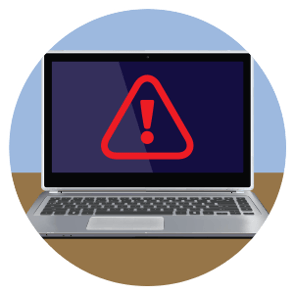While those in IT are sold on moving to the cloud, they’re equally deterred by the security threats. Time is of the essence. According to CSO, more than 80% of enterprises have adopted two or more public cloud infrastructure providers, and nearly two-thirds are using three or more.” With the rapid migration to the cloud, and the more recent partnerships between data centers, software, and cloud computing technologies, organizations need to be prepared for the potential unintended consequences stemming from weaknesses and unauthorized changes in a cloud environment.
Cloud Safety
Generally speaking, cloud security refers to a set of policies, controls, procedures, and technologies working together to protect cloud-based systems, data, and infrastructure. The end goal is to protect data, satisfy regulatory compliance, protect privacy, and set authentication rules for users and devices.
Software that can aid with cloud security can be configured to the exact needs of the business and managed in one place, helping to streamline IT operations, and saving time and resources. It also allows the focus to be directed to other critical tasks.
By 2018, 96 percent of organizations were using cloud computing in some way, according to CIO.com. At the same time, threats to security (data breaches, human error, and insider attacks) continue to increase — and they can come with huge costs. As noted by Forbes, data breaches cost companies globally an average of $3.86 million. That said, as moving to the cloud becomes the standard, cloud security must evolve alongside it.
If organizations don't recognize the value of system integrity monitoring software, or if cloud security is not prioritized, companies will pay the price of leaving matters to chance. Proactive IT managers, however, know they must give a cloud environment the protection that it needs.
The following points about cloud security are key takeaways that everyone — from engineers to CSOs — should embrace:
1. APTs are Evolving
Advanced persistent threats (APTs) are real, and traditional security measures and practices such as antivirus and firewalls may not be to stop a breach from occurring in the cloud without additional processes in place. Though the difficulty in detecting APTs increases as the depth of the cloud increases, there are characteristics that can help identify an APT.
Those characteristics include:
- Bypassing signature-based detection systems
- Establishing multiple points of entry
- Highly targeted vulnerabilities
- Multi-phase in nature
- Varying technical actions
- Odd Symptoms serving as warning signs
A dedicated security team should be tasked with identifying any indicators of compromise regarding security and compliance.
2. Cloud Vulnerabilities
Whether on-premise or in the cloud, container security solutions still need to be configured and managed. Data, by its very nature, is vulnerable to threats. Containers, whether in the cloud or not still need to be monitored for compliance and security alike. With some predictions stating the cloud security growth to more than double to $3.5 Billion, ensuring that vulnerabilities are not being ignored is top of mind for many.
Vulnerabilities can include application security, excessive access, data backup issues, user tracking, and never-ending password credential concerns. As additional devices and applications are included within an organization's enterprise, CISOs may need additional tools to help assess these vulnerabilities and threats.
3. Cloud Security Strategies
Though cloud providers deliver here on the front lines with robust vulnerability and incident response tools, some organizations may need additional security and compliance measures. For example, incident reports can detect underlying system weaknesses. Another advantage is that such tools can dramatically shorten the time between critical security audits from yearly or quarterly, to monthly, weekly, or even daily, to identify and address any holes before they become disastrous. It’s up to your discretion how often integrity monitoring is necessary. The specifics can vary from device to device and from network to network. Scans can be scheduled (known as automated security) or performed on demand to bring attention to any security gaps.
4. Practicing Good Security Hygiene
Do you have a good handle on user permissions? Start with an audit of your cloud privileges and user accounts. Have employees, vendors, or other partners since moved on? Cleaning out accounts and removing access to the cloud for those who should not have it can be the first line of defense in intrusion detection.
Active accounts should not be immune from scrutiny. Users should only be given the appropriate level of permissions they need to do their job. Minimizing access can help you avoid unnecessary vulnerabilities and risks, especially as it relates to maintaining the integrity of critical files.
5. Identifying and Minimizing Risk
With the average cost of IT downtime estimated at $100,000 an hour, it’s critical to minimize risks. One of the best ways to protect your data is to think ahead and plan for the worst-case scenario. In the event of a loss, how quickly can you retrieve critical data in the least amount of time possible? Better yet, is there a way to prevent the disaster from occurring in the first place?
A cloud disaster recovery plan can save the day, especially when system files are of concern. Truly protecting your endpoints and data assets requires the ability to remediate incidents when being detected.
Know that you don’t have to go it alone when it comes to cloud security. Changes in the IT environment can have devastating consequences. Detecting changes and being able to respond to them quickly is a critical component of a solid IT security program. CimTrak helps ensure systems are performing as expected and secure. Learn more about CimTrak today.
Tags:

May 2, 2019




